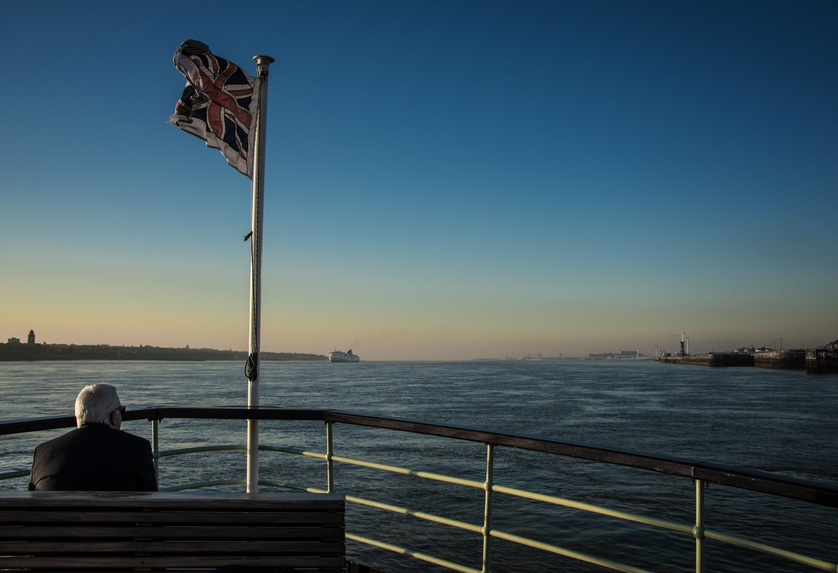
 In many ways, the River Mersey is the lifeblood of Liverpool and the surrounding area. Within the River and its estuary, the area would have fewer natural resources and the trading abilities of the city would be vastly diminished. That is not to say that the Mersey always has positive effects on the areas that it flows through. Like any river, it is prone to flooding and the effects of pollutants. Nonetheless, the Mersey is an important feature of the city.
In many ways, the River Mersey is the lifeblood of Liverpool and the surrounding area. Within the River and its estuary, the area would have fewer natural resources and the trading abilities of the city would be vastly diminished. That is not to say that the Mersey always has positive effects on the areas that it flows through. Like any river, it is prone to flooding and the effects of pollutants. Nonetheless, the Mersey is an important feature of the city.
Mersey Origin
The name Mersey can be roughly translated from Anglo-Saxon as meaning “boundary river”. At one point in time, the river is likely to have been used as a demarcation between the kingdoms of Mercia and Northumbria. More recently, the river clearly divided the historic counties of Cheshire and Lancashire.
The Mersey itself is a confluence of three tributary rivers; Goyt, Tame and Etherow. The Etherow begins in Longdendale, the Tame has its source on Denshaw Moor, and the Goyt starts on Axe Edge. Most geographers define the start of the Mersey as being situated in Greater Manchester, at the place where the Tame and the Goyt meet. From here, the river flows through the North West of England until it meets the sea close to Liverpool.
Importance of The Mersey
The Mersey estuary is a place of historical, cultural, geographical and biological importance. Liverpool sits at one side of the estuary and Birkenhead sits at the other. Together these settlements have come to be known as Merseyside. Crossings have existed between these two settlements since mediaeval times, when a ferry crossing was established to allow people to get to Birkenhead Priory. The ferry connection between the two settlements was even immortalised in the song “Ferry Cross the Mersey” by Gerry and the Pacemakers.
Merseyside also became an important trade and military destination thanks to the river. Early on in its history, Liverpool and the Mersey estuary was used as an embarkation point for soldiers who were travelling to Ireland. Later on, the city received thousands of immigrants who were escaping from the Great Famine in Ireland. The river also allowed goods to be transported more easily from across Northern England to the sea, and vice versa. From here, these goods could be transported to other national and international destinations. This trading ability helped to increase the wealth and population of Liverpool for over 500 years.
Because of its industrial history, the Mersey has been affected by extreme pollution. Early environmental testing showed a decline in oxygen levels in the river, which had a huge effect on the wildlife population at all levels of the food chain. Sediment examinations have also shown that high concentrations of metals (such as mercury) and organic pollutants have been recorded.
Sediment dwellers have a tendency to sit at the bottom of the food chain, and therefore these pollutants are able to accumulate in wildlife throughout the system as animals feed on each other. The wildlife population in the area has decreased a lot since the industrial revolution. Thankfully, recent sediment and oxygen analysis show that conditions are improving in the river. Scientists believe that pollutant levels have now decreased again so that they are now lower than they were before the industrial revolution.
The wetlands environment, which has been created by the fresh water of the river meeting the salt water of Liverpool Bay, is conducive to biological diversity. The wetlands of Merseyside are home to many different duck species and waders, including Pintail, Turnstone, Redshank, Black-tailed Godwits and Teals. The waters around the estuary were once rich in fish, including dab, whiting, plaice, flounder, mackerel, dogfish, tope, shrimp and whitebait.
Fish stocks have diminished over the past few centuries because of a combination of overfishing and pollution. The area also used to be home to a wild otter population. Although the species became extinct in the area for a time, evidence suggests that some animals may be making a return to the river. These animals are known to only thrive in clean water, so seeing them again in the Mersey would be a huge boost. Larger mammals that can be found in the waters of the estuary include bottlenose dolphins, harbour porpoise and Atlantic Grey Seals.

Leave a Reply